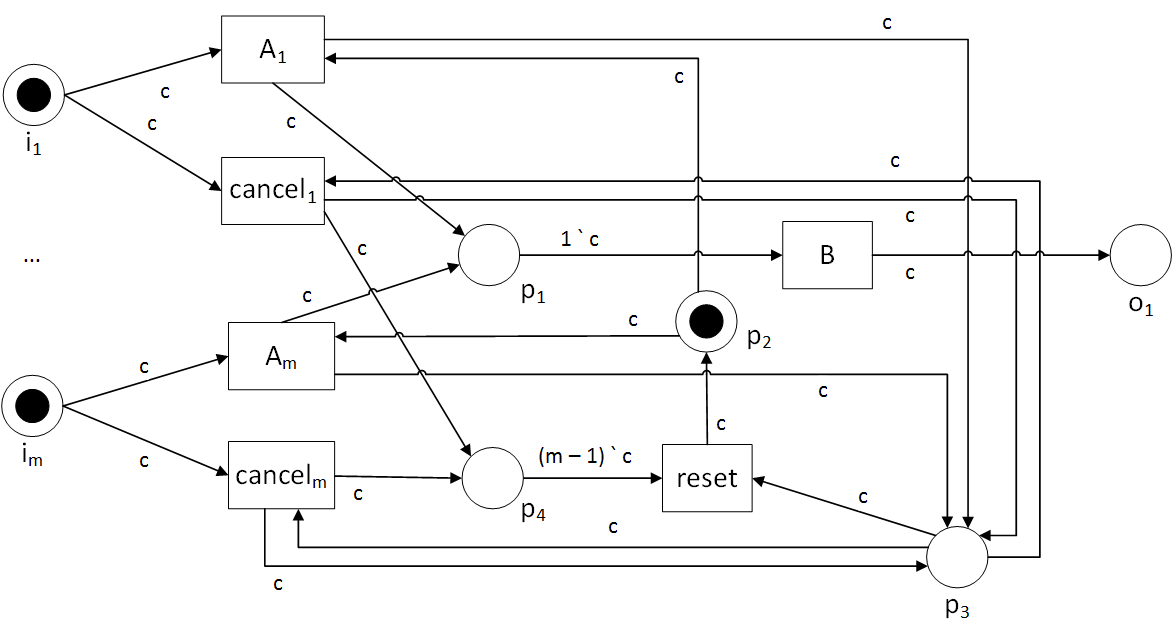Exercises
5.1 Workflow Patterns
a) Workflow patterns examples
For the scenarios listed below, identify which of the workflow patterns presented in the book is used.
- A police department control centre receives emergency calls and then sends a patrol car to the callers location.
- Only after talking to all witnesses in a case, the police officer writes his preliminary investigation report.
- If a police officer wants to swap a shift, they might ask several fellow officers if they are willing to change theirs. As soon as one responds, the they ask their superior to swap the shifts. However, when other colleagues still respond to the initial requests, the offerer still listen to their answers.
- For quality assurance, a police officer is obliged to check one piece equipment on their patrol car directly after signing on to a new shift. Each time, they might check the guns, the radio set or the first aid kit.
- A criminal investigation is a very complex process. However, if the complaint of the offence is withdrawn, the investigation process may be aborted immediately.
b) Workflow pattern design
Below you find the textual description of the “Structured Loop” workflow pattern, which you do not find in the book. Model both variants of this pattern as a Petri net.
The “Structured Loop” pattern allows the repeated execution of an activity “Y”. In contrast to the “Multiple Instance” pattern however, at most one instance can be active at the same time.
The decision on whether the activity is repeated may be done in a “while … do” fashion by a condition called “pre-test” that is evaluated before the activity. The other variant is a “repeat … until” loop with a “post-test” condition after the activity.
The “Structured Loop” has a single entry and exit point. For modelling the Petri nets, imagine there is a preceding activity “X” and a subsequent activity “Z”.
b) Workflow pattern analysis
You already know several workflow patterns and their (coloured) Petri net representations.
Now have a look at the coloured Petri net below with it’s initial marking and answer the question below.

Fig. 5.1 b) Workflow pattern
- What workflow pattern from the book does the given pattern remind you of? Identify and describe the differences.
- Describe a possible scenario of a business process that might use the above pattern.